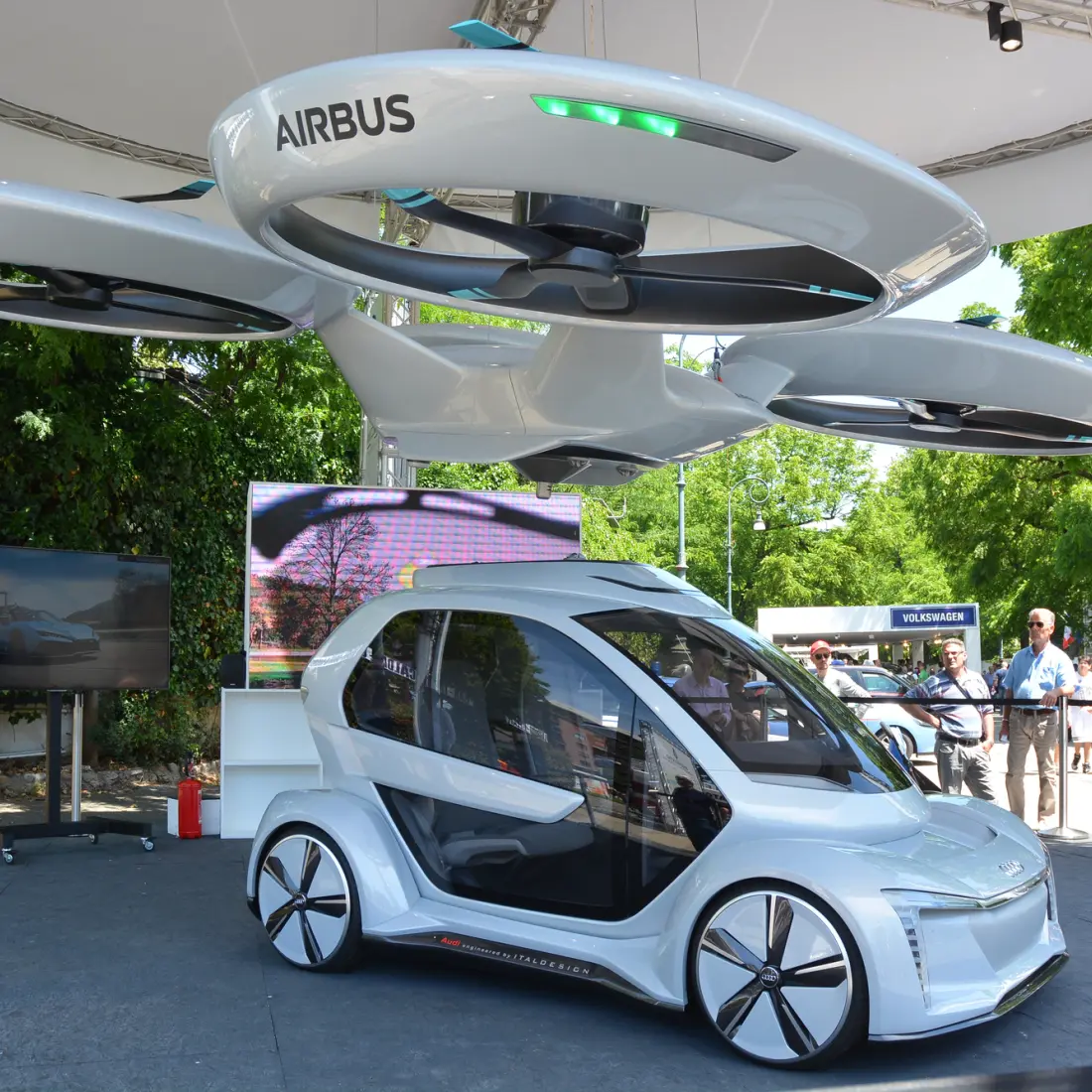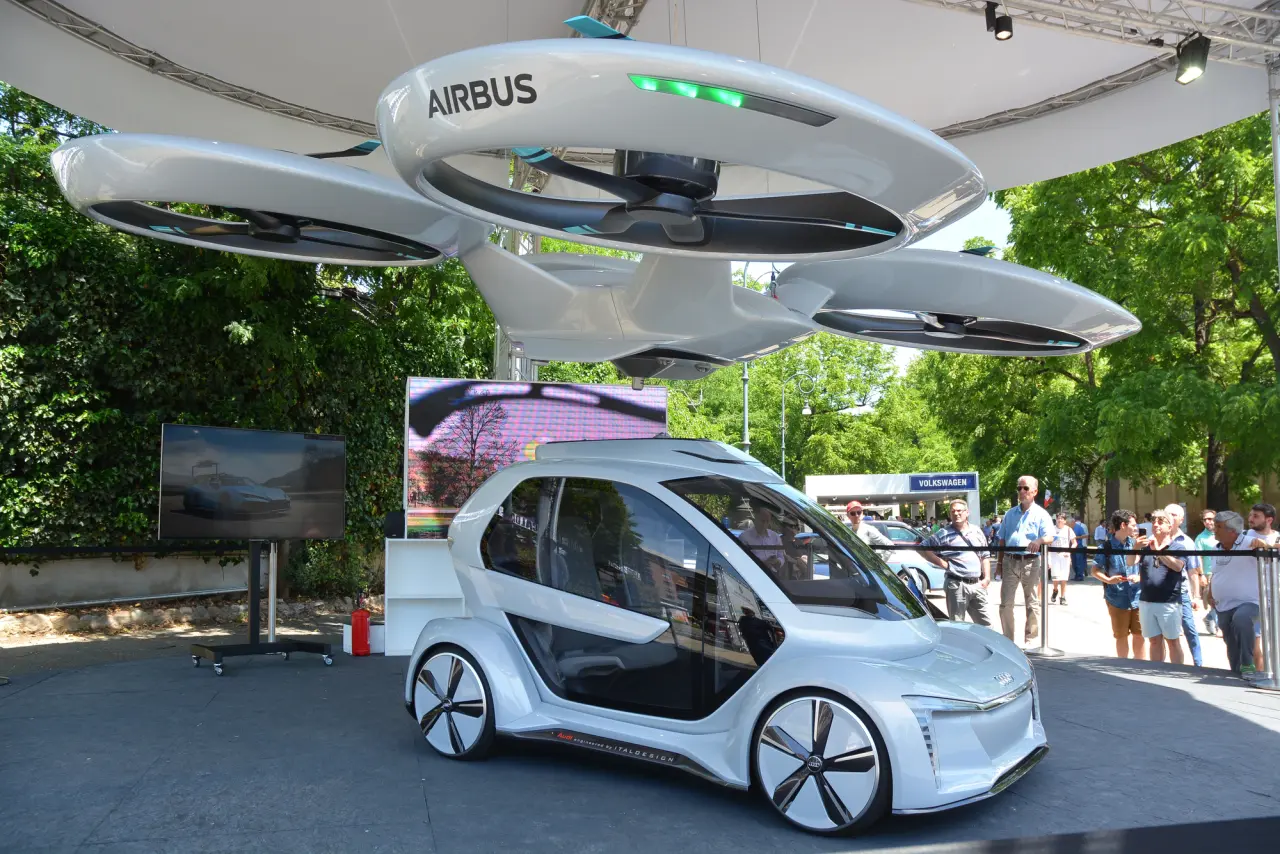Will urban air transportation become widely available?


Urban air transportation has existed for decades. Emergency medical services, law enforcement and the media operate helicopters in city areas. Private passengers and organizations also use these aircraft to avoid road traffic.
Past and current urban air transportation activities have been limited to a handful of flights. However, some experts foresee an expansion in urban air mobility (UAM) operations in the near future. The Federal Aviation Administration (FAA) points to the possibility of a wider range of UAM services using helicopter or vertical-takeoff-and-landing aircraft (VTOLs).
Here’s a look at recent advances and a look at where UAM could go in the coming years.
The value of urban air transportation technology
The development of urban air transportation technology, such as drones and electric VTOLs (eVTOLs), will help cities and their populations in multiple different ways, including:
- Decreasing traffic on the roadways;
- Reducing emissions compared to road vehicles (if using eVTOLs);
- Providing transportation options for underserved areas not connected by highway or rail;
- Providing more direct and efficient routes that don’t require following roadways.
Governments can develop and manage UAM infrastructure without having to invest in the creation and upkeep of roads, highways or railroads. They’ll only need to implement an air traffic control system to manage the flow of aerial vehicles in their jurisdiction.
Developments in air transportation technology
New technologies are making large-scale urban air transportation more realistic. Here are the new craft, designs, and systems driving the UAM push.
- eVTOL designs use tiltrotors to provide lift and cruise capabilities. These designs are not unlike unmanned drones people have been using for recreation or fun for the past couple of decades.
- Electric propulsion systems can provide the lift and flight capabilities small aircraft need to travel in urban environments without producing carbon emissions. They are still in the design stage.
- AI and machine learning programs, informed by radar and sensors, can help create control systems for aerial vehicles. These systems can help avoid accidents or take over control if the pilot is injured.
- Digitized and AI-enhanced air traffic control systems are in development to handle increased traffic and ensure effective route management.
Other technologies, like unmanned aircraft, are also in the testing phase.

Infrastructural developments
UAM systems won’t require extensive road construction and maintenance. However, other types of infrastructure will be necessary to support these air transport operations.
Here are some infrastructure examples:
- Vertiports are landing and takeoff areas for VTOLs and other vertical-takeoff aircraft. These spaces will have maintenance facilities and electrical charging equipment.
- Stable electric grids are necessary to provide advanced charging capabilities. To fit with the low-carbon nature of eVTOLs, cities may opt for smart grids with power from renewable energy sources.
- Digital infrastructure will be important for UAM planning. 5G connections and cloud-based platforms can help with real-time aircraft tracking and traffic management.
In addition to these physical and digital infrastructure developments, cities will need to build regulatory frameworks to manage the aircraft and operations in their airspace.
Logistics of implementation and regulation
Much of the planning that needs to happen before urban air transportation becomes a reality needs to focus on the practical and logistical aspects of UAM. Well-defined frameworks in the following areas are necessary.
- Laws and regulations are essential for managing the licensing of aircraft and pilots, safety inspections and appropriate use of airspace. Governments will have to come up with an entirely new set of traffic laws to manage UAM operations.
- Traffic management systems can plan routes to avoid collisions and use real-time tracking to manage aircraft in the airspace.
- Safety standards involve laws for the safe operation of aircraft. There will also be standards and inspection frameworks to ensure each VTOL, helicopter or drone is airworthy.
- Energy needs are another vital consideration. The grid has to be able to handle eVTOL and drone charging demand. Also, there needs to be redundancies to ensure vital air traffic control systems remain online during power outages.
These various frameworks need to incorporate rules and standards from current auto traffic regulations, energy distribution practices, and air traffic control systems at airports.
Research
While the theory of urban air transport is attractive, research shows that it needs to be practical to succeed. One study in the journal Transportation Research Part A found that the popularity of urban air transport in Northern California would depend on cost and time saved versus driving or public transit. The researchers predicted that UAM systems would be most used in high-income areas where people could afford higher fares.
Another paper in CEAS Aeronautical Journal analyzed the German Aerospace Center’s project called HorizonUAM and used mathematical models to put numbers of cost and availability. They found that fares would have to be around 3 €/km ($3.35 per km or $5.36 per mile) to be economically feasible for the population of a city.
Challenges and solutions
The feasibility of urban air transport will also depend on how well stakeholders can address the challenges they are likely to encounter as they develop systems and aircraft. Here are four potential pitfalls and the solutions that could help overcome them.
- Pollution could be an issue if aircraft rely on fossil fuels or if the grid that charges eVTOLs uses coal or gas. Electric charging stations powered by roof-mounted or ground-mounted solar panels can reduce the UAM system’s carbon footprint.
- Power usage could also be an issue, with charging aircraft taking power that homes and businesses need or increasing energy prices due to high demand. Again, well-planned solar arrays can help address this issue, especially if the sites are placed strategically to meet the demand increase from UAM operations.
- Public perception could also be a roadblock. As the Transportation Research Part A paper pointed out, urban air travel could begin as an option for wealthy commuters. This could cause the public in general to question the necessary infrastructure investments.
Governments and stakeholders need to show the public a long-term plan to bring costs down, while also explaining the potential benefits of a UAM system to the community.
Alternatives
Other solutions can help make urban air transportation more accessible. Here are three options for addressing the issues holding up widespread UAM adoption.
- Autonomous aircraft can cut costs by removing salaried pilots and crew from the equation. This solution requires careful safety testing and consideration. Such systems can also assist pilots by increasing safety.
- Connecting to existing infrastructure can help integrate the air transit system and make it more useful. For instance, a city can add vertiports next to busy subway stations where they can serve as an extension for the transit system.
- Minimize impact on city life with careful air traffic planning. For example, plan flight paths over roadways or industrial areas to minimize noise for residents.
Long-term planning can help reduce the cost of fares by creating large-scale operations. Once the infrastructure is in place, the scale can make continued operation cheaper, with operators passing some savings on to passengers.
Conclusion
Though large-scale urban air transportation isn’t in the near future, developments and new technology could eventually make it an option for large cities.